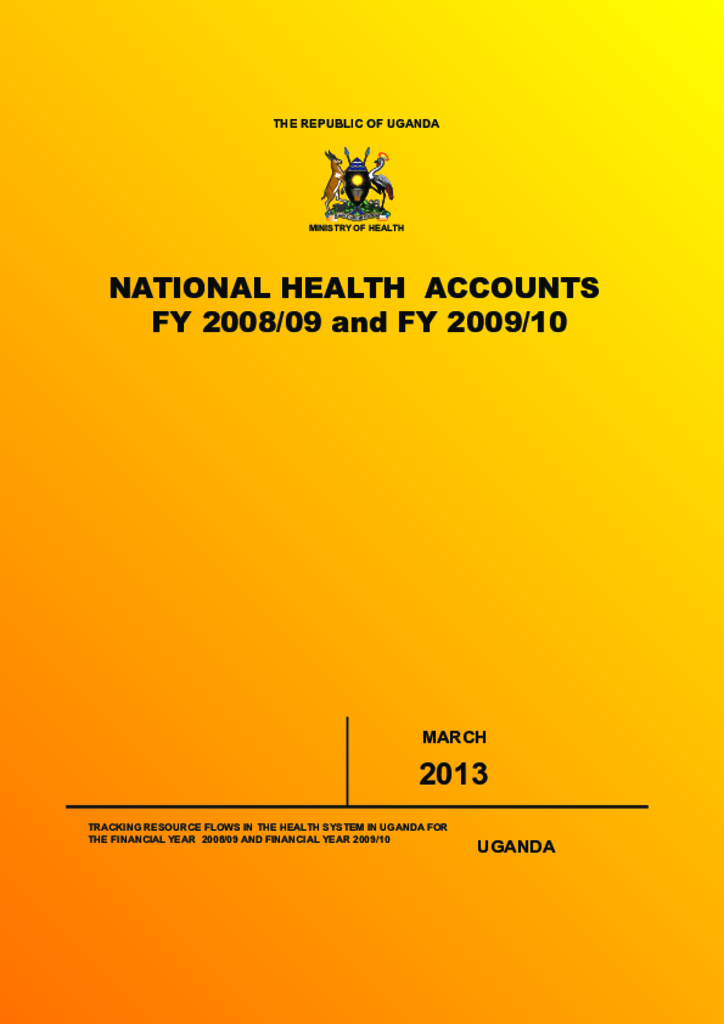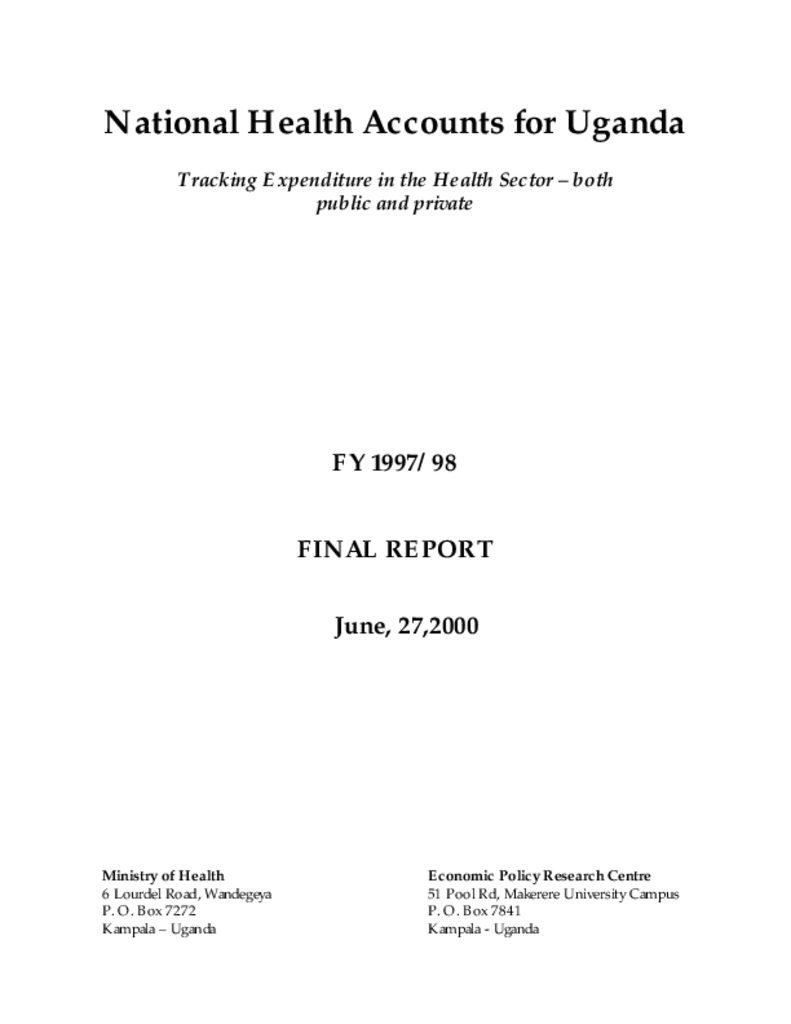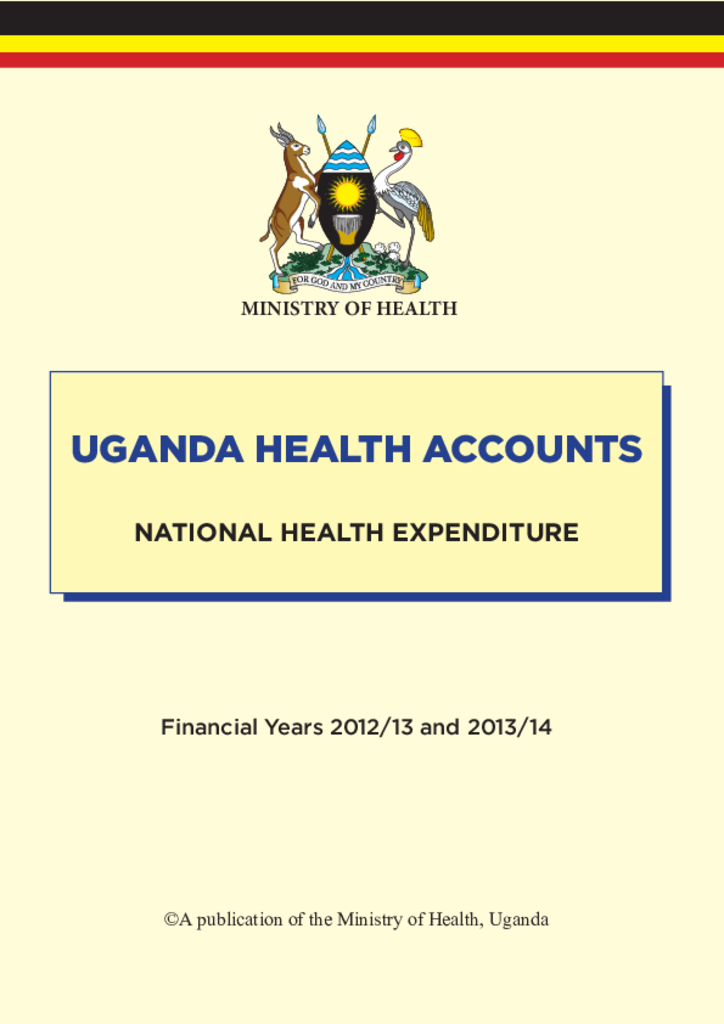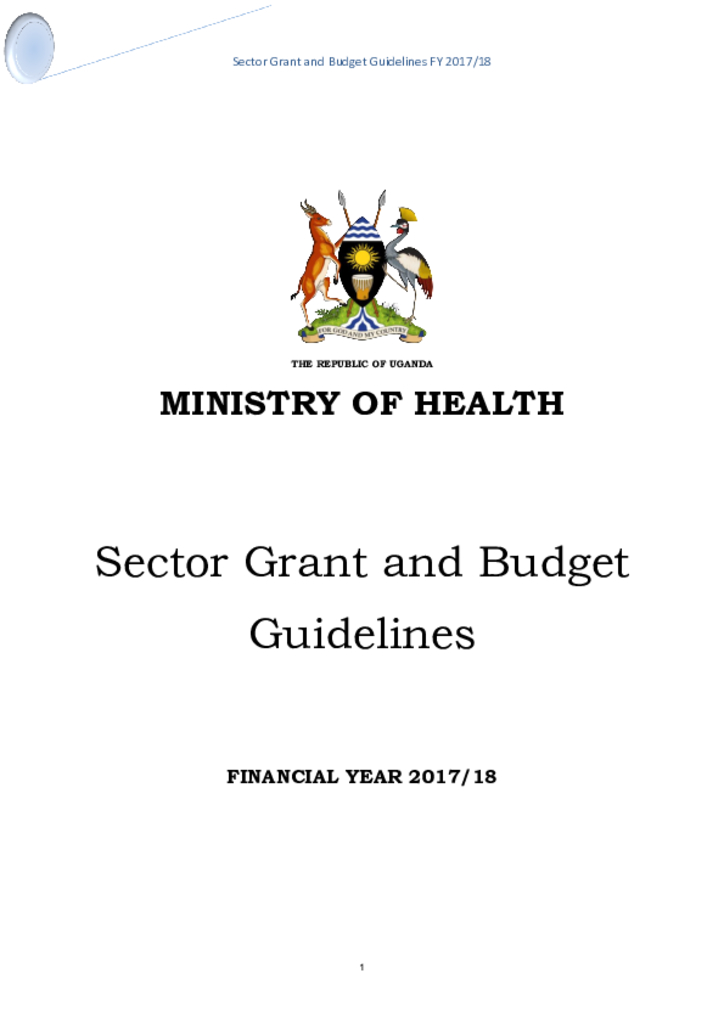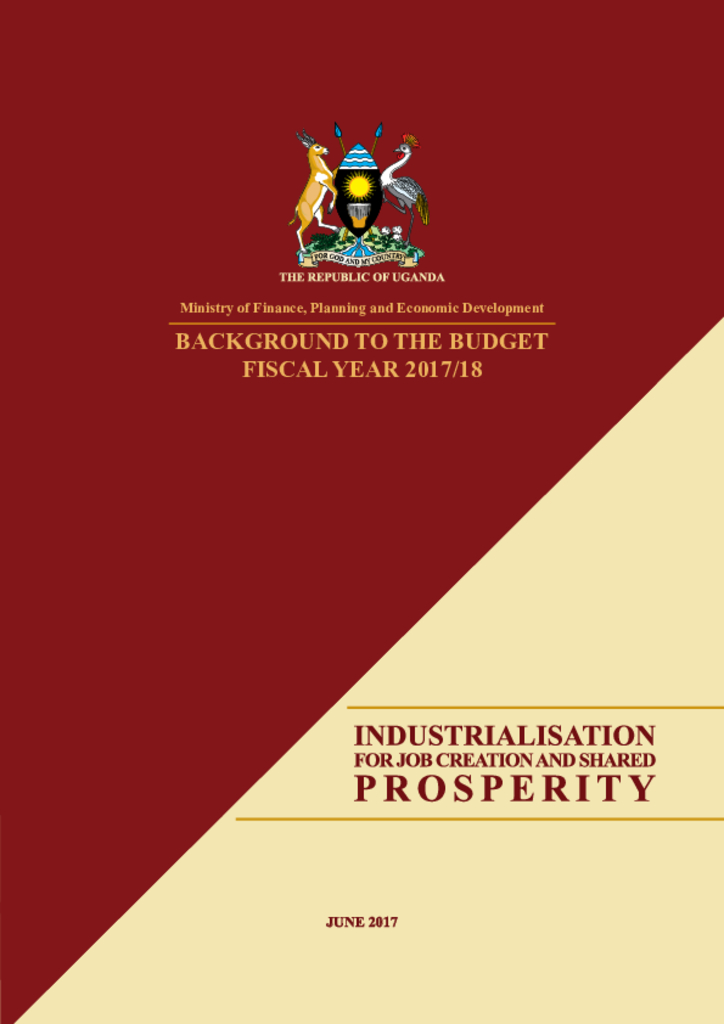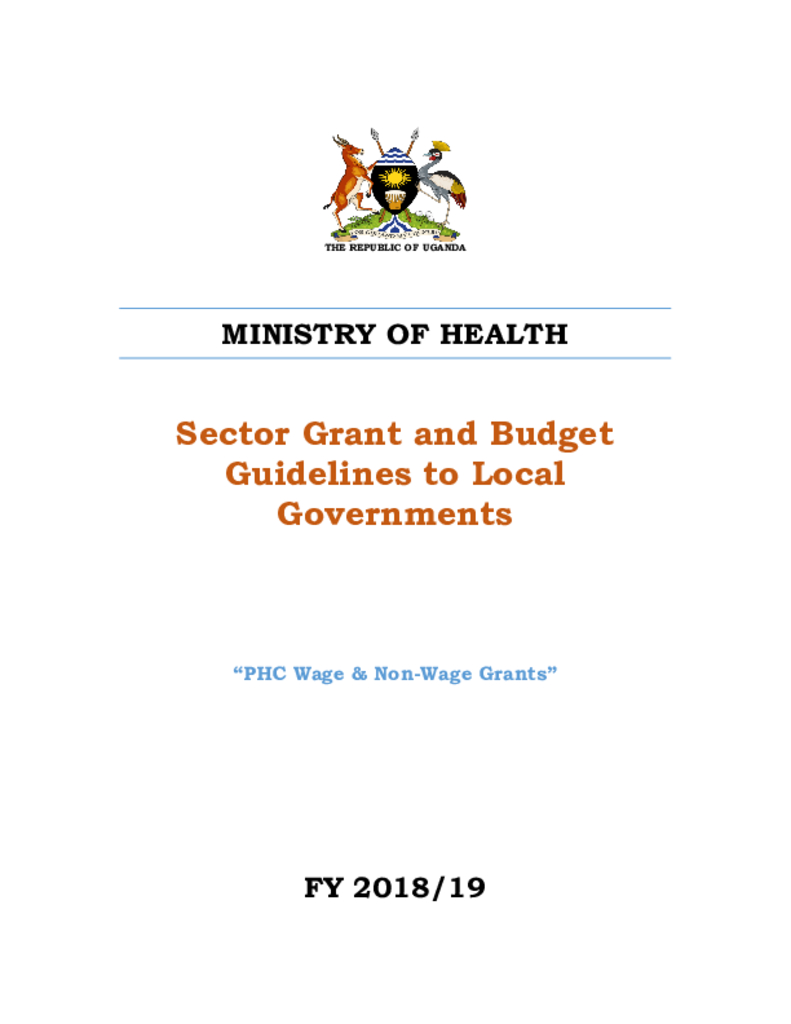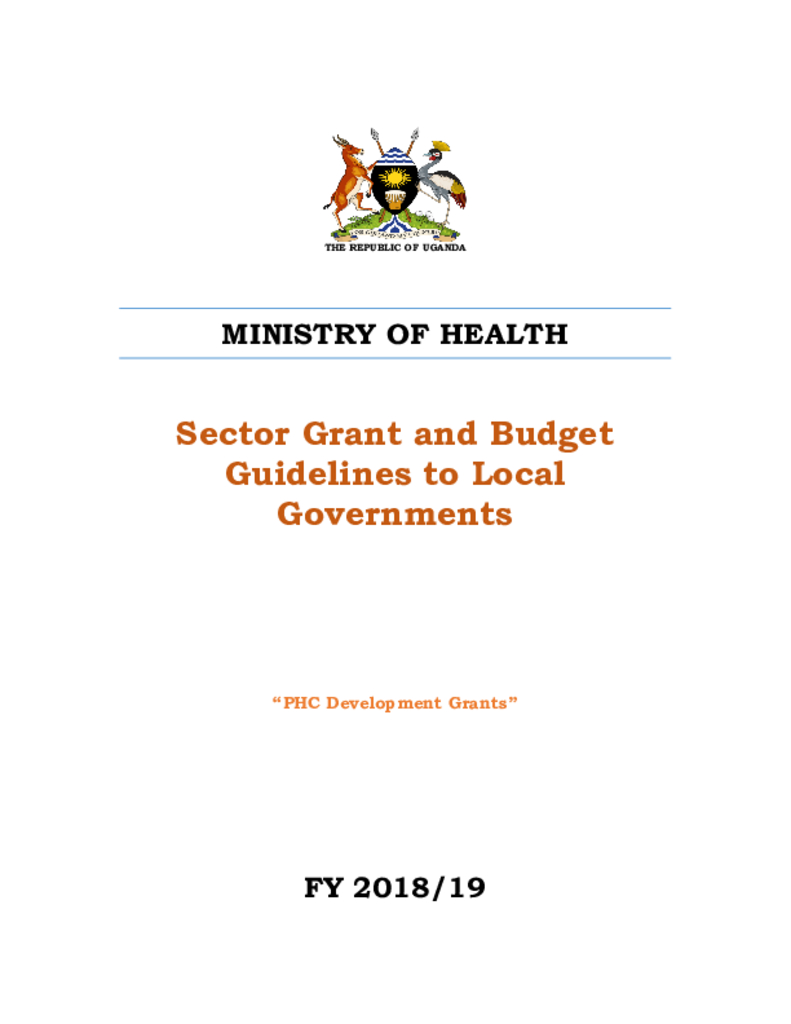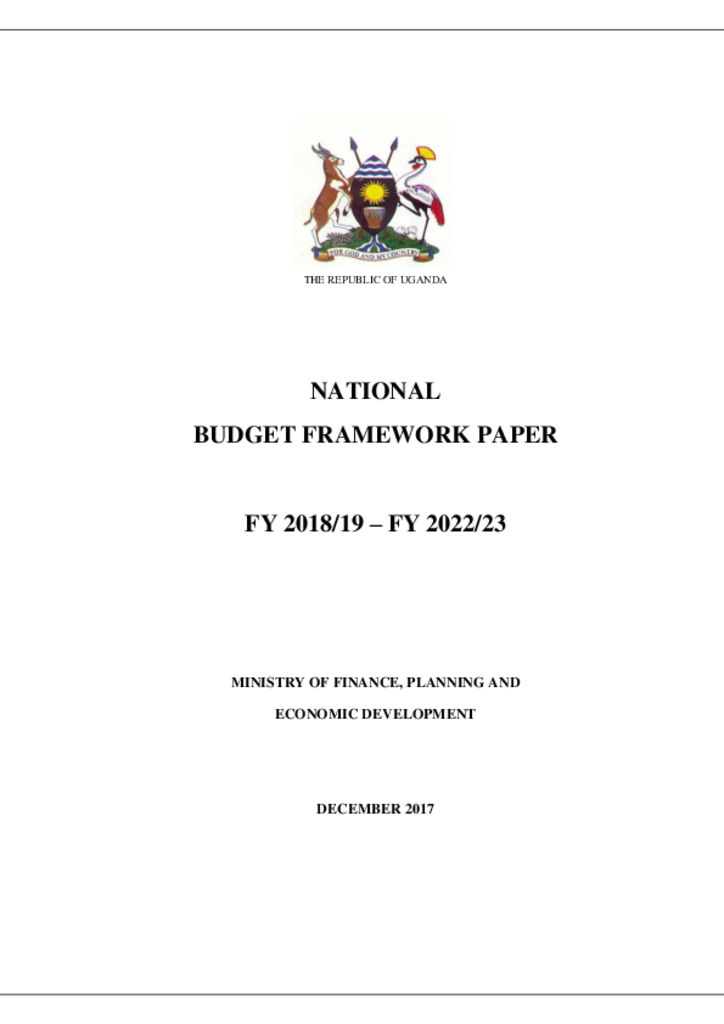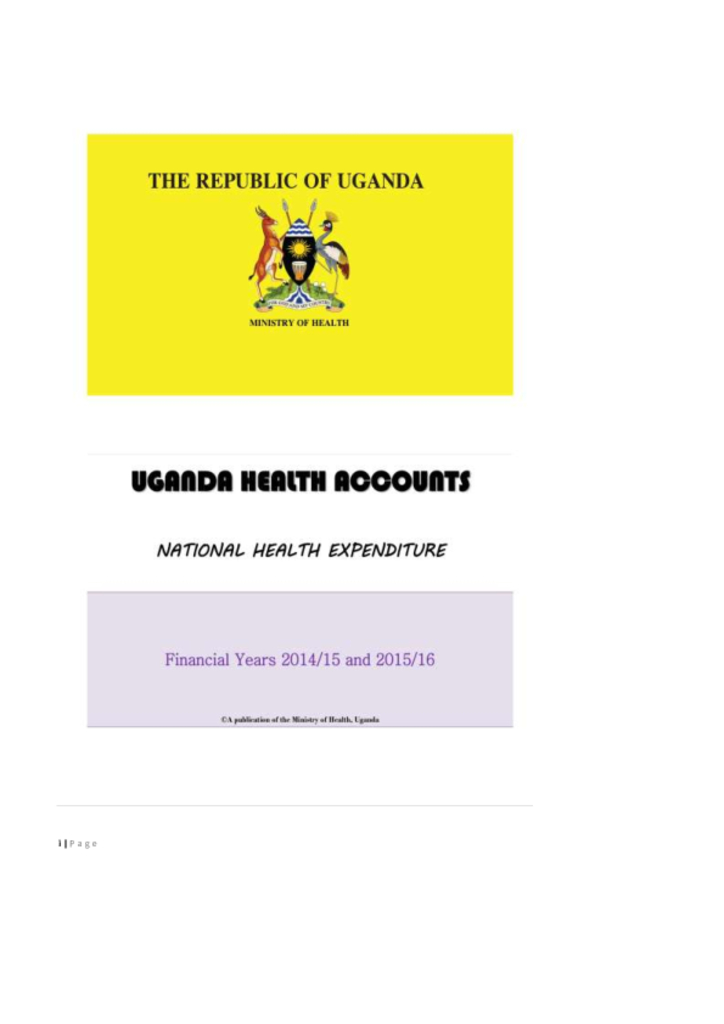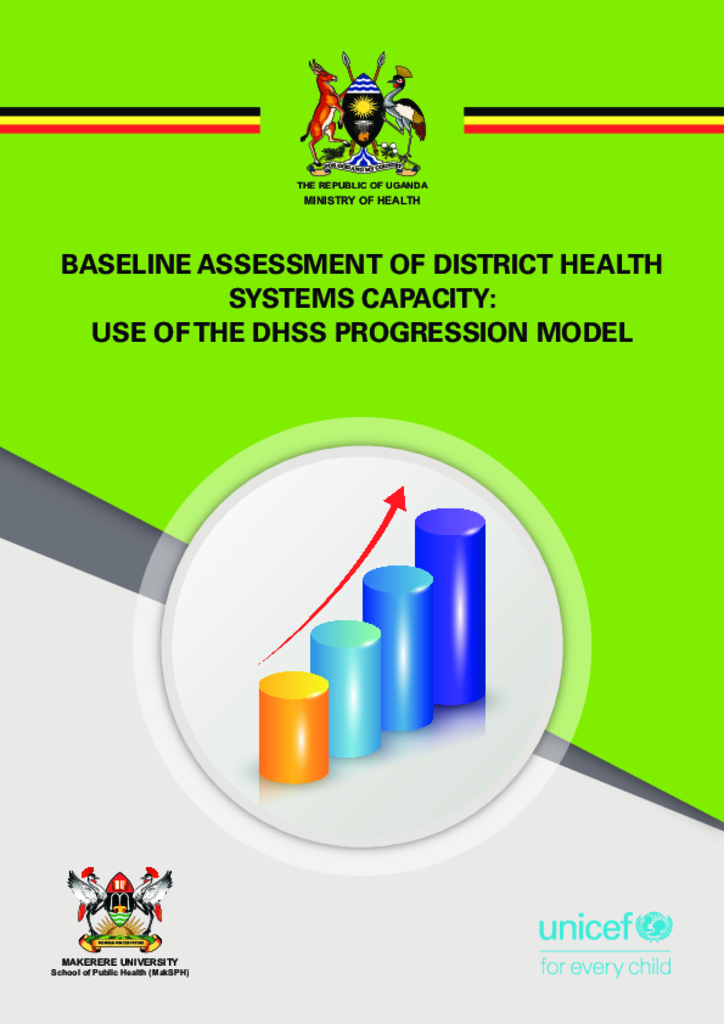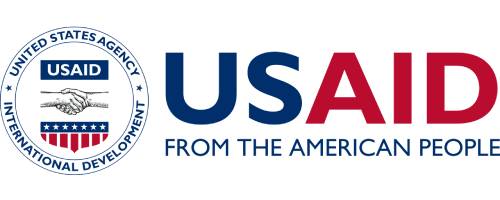Sustainable and equitable health financing systems play a critical role in improving health outcomes. However such policies must be built on foundation of sound evidence and analyses. The National Health Accounts (NHA) is a tool that helps countries to clearly
visualize the flow and use of funds through the health sector, thus contributing to evidence based health policy decision making.
The overall objective of the fourth round of NHA in Uganda was to track the amounts and flows of financial resources into the health system in Uganda for financial years 2008/09 and 2009/10 and, respond to key health financing policy questions within the health sector. The study examines Uganda’s Total Health Expenditure for FY2008/09 and FY2009/10, focusing on funding of health sector, management of the financial resources, and their dissemination to General Health, Reproductive Health and Child Health expenditures. It therefore provides a synthesis of findings intended to help policy makers formulate and design a comprehensive health financing strategy.
This report presents results from a study of Uganda’s National Health Accounts for the Fiscal Year 1997/98. The study set out to describe the flow of funds in Uganda’s healthcare system, including both public and private sectors. Using a comprehensive view of the health sector and standard definitions of entities and spending, NHA estimates can performed on an annual basis and can provide valuable data for policy-relevant research and analysis to support decision making in the health sector. This NHA Study is the first such study in Uganda, and hopefully is one that will be repeated on an annual basis, using an institutional capacity to execute them.
The total Current Health Expenditure (CHE) in Uganda in 2012/13 was Shs.4,866 billion that translates to a per capita spending of Shs. 144,374 ($55). This increased in nominal terms by 1.7% and in real terms by Shs. 86 billion to 4,952 billion in 2013/14 that translates to a per capita spending of 146,941 ($56). The CHE for both years in a row is much lower than the Minimum $84 per capita recommended by WHO(CME) if quality care is to be provided by any country in sub Sahara African Countries. Over the same period, PPP(GDP) grew in nominal terms by 4.7% on average and in real terms from Ushs.58,865 Billion in 2012/13 to Ushs 68,400 Billion after rebasing in 2013/14. Current health spending as a ratio of GDP was at 8.2% for 2012/13 and 7.2% (after rebasing) for 2013/14..
These guidelines are issued by the Ministry of Health to Local Governments to provide information about the sector conditional grants and guide the preparation of Local Government budget estimates for the Health sector. They give details of (i) the national policies for the sector, (ii) the role and mandate of Local Governments in the sectors, (iii) an overview of Central Government grants to Local Governments, (iv) an explanation of how these are allocated to each Local Government, and (v) requirements that Local Governments must follow when preparing the budget.
The Budget for Fiscal Year 2017/18 is themed: “Industrialisation for Job Creation and Shared Prosperity” in line with that of the East African Community. This theme corresponds with that of the second National Development Plan (NDPII):‘‘Strengthening Uganda’s Competitiveness for Sustainable Wealth Creation, Employment and Inclusive Growth”. It is also consistent with the theme of Africa’s Agenda 2063 which is about a prosperous Africa based on inclusive growth and sustainable development1
These guidelines are issued by the Ministry of Health (MoH) to Local Governments (LGs) to provide information about the sector conditional grants and guide the preparation of LG budget estimates for the Health sector. They give details of (i) the national policies for the sector, (ii) the role and mandate of Gs in the sectors, (iii) an overview of Central Government grants to LGs, (iv) an explanation of how these are allocated to each LG, and (v) requirements that LGs must follow when preparing the budget.
These guidelines are issued by the Ministry of Health (MoH) to Local Governments (LGs) to provide information about the sector conditional grants and guide the preparation of LG budget estimates for the Health sector. They give details of (i) the national policies for the sector, (ii) the role and mandate of Gs in the sectors, (iii) an overview of Central Government grants to LGs, (iv) an explanation of how these are allocated to each LG, and (v) requirements that LGs must follow when preparing the budget.
1.1 Purpose of the Guidelines This document is to provide guidance for the budgeting and utilization of the Primary Health Care (PHC) grants and other decentralized health grants in Financial Year (FY) 2018/19. These guidelines should be used to prepare
and implement annual work plans for both Public and Private-Not-For-Profit (PNFP) facilities as well as Private Health Provider facilities where feasible /desirable.
The Budget Strategy for FY 2018/19 presented in this National Budget Framework Paper elaborates Governments continued commitment to achieve middle income status. It thus focuses on improving production and productivity in the primary growth sectors – agriculture, manufacturing minerals, and tourism– to drive faster growth of the economy, addressing the infrastructure gaps and other constraints to private sector development as well as overall improvement in delivery of public services to the population, mindful of the need to address emerging issues such as efficient management of urbanisation and hastening demographic transition to reap the demographic dividend.
Current Health Expenditure was 4,944 Billion UGX in financial year 2014/15 equivalent to US$ 1.7 Billion and which represents 1.1% of Gross Domestic Product and for financial year 2015/16 , the CHE was 5,309 billion UGX equivalent to US$ 1.8billion , The health expenditure per capita on average for the two years under study was US$ 51 reducing from US$ 56 in the previous NHA study mainly due to increase population and devaluation of the Uganda Shillings (UGX). The CHE for both years in a row is much lower than the Minimum $84 per capita recommended by WHO(CME) if quality care is to be provided by any country in sub-Sahara African Countries. Over the same period, PPP(GDP) grew in nominal terms by 4.7% on average and in real terms from Ushs.76,727
Billion in 2014/15 to Ushs 86,549 Billion in 2015/16. Current health spending as a percentage of GDP was at 7.1% for 2014/15 and 7.4% for 2015/16.
The study investigated the relationship between Mobile Data Management and Project success. It was guided by the three objectives; (1) To find out the relationship between mobile data collection and project success. (2) To examine the relationship between mobile data analysis and project success. (3) To analyse the relationship between reporting findings and project success. The researcher used a cross sectional survey design under quantitative and qualitative research approaches. Using a self-administered questionnaire, quantitative data was collected from 64 respondents and interviews were conducted with 4 respondents using an interview guide for qualitative data
UNICEF is making significant investments in health system strengthening at all levels of the health care system. The strategy targets national, sub-national, and community levels of the health system with inter-related systems strengthening interventions. To be able to link health system strengthening inputs to outcomes (coverage) and impact of its interventions, UNICEF Uganda designed a Monitoring and Evaluation (M&E) framework based on the progression model for measuring the capacity of health systems using a set of indicators.
This report documents the results of the third global survey on eHealth conducted by the WHO Global Observatory for eHealth (GOe), which had a special focus – the use of eHealth in support of universal health coverage. eHealth plays a pivotal role in promoting UHC. For instance, it helps provide services to remote populations and underserved communities through telehealth and mHealth. It facilitates the training of the health workforce through the use of eLearning, and makes education more widely accessible especially for those who are isolated
